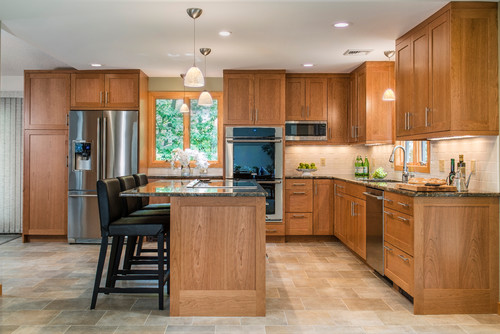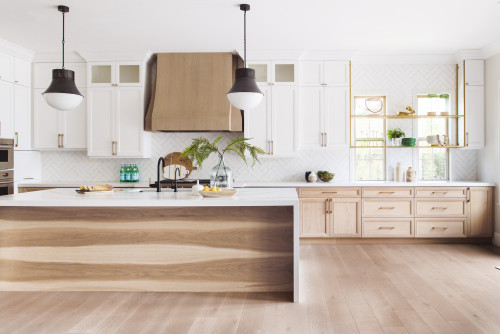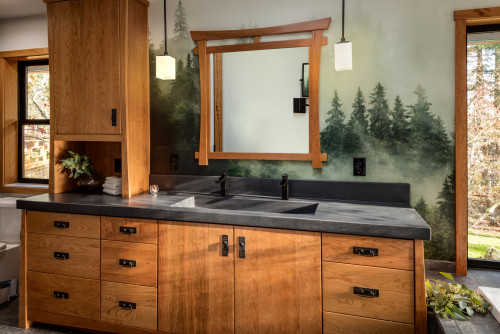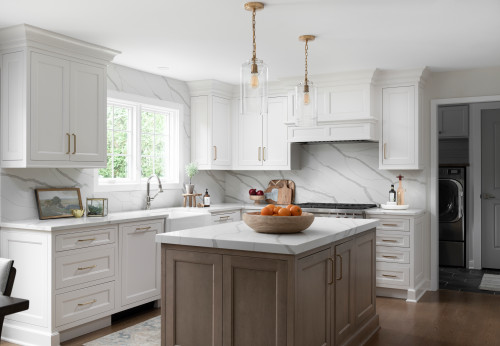Protective Coatings for Engineered Wood Cabinets: A Complete Guide

Choosing the right Protective Coatings for Engineered Wood Cabinets is the most critical step in ensuring their beauty, durability, and longevity. At rtadepot.ca, we specialize in high-quality cabinetry and understand that the finish is just as important as the construction. This guide will help you explore the best coatings to protect your investment and keep your cabinets looking stunning for years to come.
1. Why Are Protective Coatings for Engineered Wood Cabinets Essential?

Proper Protective Coatings for Engineered Wood Cabinets are essential because they shield the core material from moisture, scratches, and daily wear. This significantly extends the cabinet’s lifespan, maintains its appearance, and ensures a healthier home by sealing in substrate materials.
Selecting high-quality cabinetry is only half the battle; the durability of that choice relies heavily on the finish. The right Protective Coatings for Engineered Wood Cabinets serve as the first line of defense against the challenges of a busy kitchen or bathroom environment. For homeowners across Canada, a superior coating prevents moisture from penetrating the wood substrate, which can cause swelling and damage.
Beyond protection, these coatings define the cabinet’s final look and feel. A well-chosen finish enhances the texture and color, while a poor one can cheapen the appearance. At rtadepot.ca, we ensure our cabinets feature premium Protective Coatings for Engineered Wood Cabinets that offer the best in both resilience and aesthetic appeal.
1.1. The Health Aspect of Low-VOC Protective Coatings for Engineered Wood Cabinets
Modern cabinetry involves more than just looks. The air inside our homes is a major concern, and many traditional coatings release Volatile Organic Compounds (VOCs). Opting for low-VOC or zero-VOC Protective Coatings for Engineered Wood Cabinets is a direct investment in your family’s health. These advanced formulas minimize harmful off-gassing, contributing to cleaner indoor air.
This is especially important for Canadian families with young children or individuals with allergies. By selecting cabinetry with certified low-emission Protective Coatings for Engineered Wood Cabinets, you are making a proactive choice for a healthier, safer living environment, a standard we prioritize at rtadepot.ca.
1.2. How Coatings Affect the Lifespan of Engineered Wood
Engineered wood is a stable and reliable material, but its core is vulnerable without a flawless seal. The primary role of Protective Coatings for Engineered Wood Cabinets is to create an impermeable barrier. This barrier prevents everything from spilled water to cooking steam from reaching the substrate, which is the leading cause of cabinet failure. A multi-layer factory finish provides superior protection compared to a simple coat of paint.
The type of coating also determines its resistance to fading from UV light, a common issue in sun-filled Canadian kitchens. High-quality Protective Coatings for Engineered Wood Cabinets contain UV inhibitors that keep your cabinet color true for years, safeguarding your investment and ensuring lasting beauty.
1.3. The Role of Coatings in Different Canadian Climates
Canada’s diverse climate presents unique challenges for cabinetry. In humid coastal regions like Vancouver, the primary concern is moisture infiltration. Here, Protective Coatings for Engineered Wood Cabinets with superior sealing properties, like conversion varnish or thermofoil, are critical to prevent the MDF or particleboard core from swelling. In contrast, in dry prairie climates with high sun exposure, such as Calgary or Winnipeg, the focus shifts to UV resistance. A coating with excellent UV inhibitors is necessary to prevent fading and discoloration, ensuring the cabinet’s color remains vibrant.
For areas with extreme temperature swings, like Ontario and Quebec, the flexibility of the coating is important. A quality finish must be able to expand and contract with the cabinet’s substrate without cracking or peeling. Choosing a finish designed for your specific Canadian climate is a key part of ensuring long-term durability.
2. Deep Dive into Coating Technologies

To truly appreciate the quality of modern cabinetry, it helps to understand the technology behind the finishes. The science of Protective Coatings for Engineered Wood Cabinets has advanced significantly, moving beyond simple paint to complex chemical formulations that provide incredible resilience. This knowledge empowers you to ask the right questions and choose a product that will genuinely last.
2.1. The Science Behind Catalyzed Conversion Varnish
Often considered the gold standard in the cabinet industry, catalyzed conversion varnish is a chemically complex finish. It is a two-part system: a resin base and an acid catalyst. When mixed, a chemical reaction begins that cross-links the resin molecules, creating an exceptionally hard and durable film. Unlike non-catalyzed finishes that dry through evaporation, this finish cures chemically into a solid, non-reactive layer that is highly resistant to chemicals, moisture, and heat.
This type of finish must be applied in a controlled factory setting with specialized spray equipment, which is why it’s a hallmark of high-quality cabinetry. For those seeking the ultimate in durability, asking for conversion varnish is a way to ensure you are getting one of the best Protective Coatings for Engineered Wood Cabinets available.
2.2. Water-Based vs. Oil-Based Polyurethane: A Modern Comparison
Polyurethane is another popular and durable option. Historically, oil-based formulas were preferred for their hardness. However, modern water-based polyurethanes have improved dramatically and are now often the preferred choice. Water-based formulas have significantly lower VOCs, emit less odor, and dry much faster. Crucially, they dry perfectly clear and do not yellow over time, which preserves the true color of your painted or light-wood cabinets.
Oil-based polyurethane, while still very durable, imparts a warm, amber tone that can alter the look of the underlying finish and will continue to yellow with age. While some prefer this warmth on traditional wood, for modern white or grey kitchens in Canada, a non-yellowing water-based polyurethane is the superior choice among Protective Coatings for Engineered Wood Cabinets.
2.3. Solid vs. Transparent Finishes: A Technical Breakdown
Cabinet coatings fall into two families: solid (or opaque) and transparent. Solid coatings, like paint, contain pigments that completely hide the substrate underneath. This makes them perfect for MDF cabinets, as they provide a smooth, flawless color finish. Transparent coatings, like varnish or polyurethane, are clear and are designed to enhance and protect the natural beauty of a wood veneer. The choice between them is aesthetic, but solid finishes can be easier to touch up, as matching a clear coat’s sheen can be more challenging than blending a solid paint color. Both types are effective Protective Coatings for Engineered Wood Cabinets when professionally applied.
2.4. The Application Process: Why Factory Finishes Are Superior
The way a coating is applied is as important as the coating itself. Factory finishes are superior because they are applied in a dust-free, climate-controlled environment. Automated sprayers apply multiple thin, even coats, which are then cured, often in special ovens using heat or UV light. This process creates a harder, more resilient, and perfectly smooth finish that is impossible to replicate with DIY methods like brushing or rolling. These methods can leave marks, result in uneven thickness, and lack the chemical hardness of a factory cure, making them less effective Protective Coatings for Engineered Wood Cabinets.
2.5. The Role of Mil Thickness in Coating Durability
In the coatings industry, thickness is measured in “mils” (one-thousandth of an inch). The final dry film thickness of a cabinet’s coating is a critical factor in its durability. A thicker, properly cured finish provides more protection against scratches, scuffs, and chemical erosion. Factory-finished cabinets are manufactured to a specific mil thickness, ensuring a consistent and robust protective layer. This is a level of quality control that cannot be matched by manual application methods, which often result in thin or uneven spots that become points of failure for the Protective Coatings for Engineered Wood Cabinets.
2.6. Emerging Technologies: Nanocoatings and Self-Healing Finishes
The future of cabinet protection is exciting. Emerging technologies include nanocoatings, which use microscopic particles to create surfaces that are superhydrophobic (water repellent), antimicrobial, or highly scratch-resistant. Another innovation is self-healing technology, where microcapsules of resin are embedded in the coating. When a scratch occurs, these capsules rupture and release the resin to fill the gap, effectively repairing the damage. While not yet mainstream, these advancements show the ongoing innovation in Protective Coatings for Engineered Wood Cabinets.
3. A Practical Guide to Cabinet Coatings

Understanding your cabinets’ finish is key to their long-term care. Whether you are installing new cabinets or maintaining existing ones, knowing the properties of your specific Protective Coatings for Engineered Wood Cabinets will help you keep them in pristine condition. This section provides practical advice for Canadian homeowners.
3.1. Assembling Cabinets Without Damaging the Finish
When assembling RTA cabinets, the primary goal is to avoid scratching the new finish. Always work on a soft surface, like a blanket or cardboard. Pay close attention to the hardware to ensure screws do not protrude and scratch adjacent doors. Taking care during assembly is the first step in preserving the integrity of the Protective Coatings for Engineered Wood Cabinets.
3.2. Protecting Your Investment During Installation and Renovation
Your cabinets are often installed before other trades, like countertop installers or tilers, complete their work. It is crucial to protect your new finish during this period. Cover all cabinet tops with a durable material like Ram Board before countertop templating and installation. Drape soft blankets or plastic sheeting over the doors and side panels to protect them from mortar, grout, paint, and potential damage from tools. Use a low-adhesion painter’s tape to secure coverings, and never apply tape directly to the finished cabinet surfaces.
3.3. How to Care For and Maintain Your Protective Coatings
Proper maintenance is essential to preserve the beauty of your cabinetry’s finish. For daily cleaning, use a soft, damp cloth with a mild, pH-neutral soap. Avoid abrasive cleaners, wax-based polishes, or harsh chemicals, as they can damage modern Protective Coatings for Engineered Wood Cabinets. Always wipe up spills promptly, especially liquids, to prevent any chance of moisture damage.
3.4. Common Mistakes to Avoid When Cleaning Coated Cabinets
To ensure your finish lasts, avoid common pitfalls. Never use harsh, acidic cleaners or vinegar, which can dull the coating over time. Avoid abrasive pads or steel wool, which will create micro-scratches. Do not let steam from appliances like kettles or dishwashers vent directly onto cabinet surfaces for prolonged periods. Finally, avoid using oil soaps or wax-based furniture polishes, which can leave a residue that attracts dirt and is difficult to remove from modern Protective Coatings for Engineered Wood Cabinets.
3.5. A Seasonal Maintenance Checklist for Your Cabinet Coatings
A brief seasonal check can prevent major issues. In the spring, do a deep clean and check for any moisture damage near windows from winter condensation. In the summer, check for any fading on cabinets that receive intense, direct sunlight. In autumn, clean any cabinets near heating vents before you turn on the furnace for the winter. In Canada’s cold winters, pay special attention to cabinets under sinks to check for any leaks from pipes exposed to the cold, as this can severely damage the finish.
3.6. A Step-by-Step Guide for Touch-Up Repairs
For a minor scratch or chip, a manufacturer’s touch-up kit can work wonders. First, gently clean the area with a soft, damp cloth and let it dry completely. If the scratch has depth, apply a tiny amount of the filler putty with a small putty knife and smooth it. Once dry, lightly sand the filler with very fine-grit sandpaper (320-grit or higher) until it’s flush. Next, use the provided artist’s brush to apply a thin coat of the color-matched paint. Let it dry, then apply a thin layer of the clear topcoat to seal the repair.
3.7. Refinishing vs. Replacing: Can You Re-Coat Engineered Wood?
This is a critical question for homeowners. Cabinets with a thermofoil or laminate finish cannot be refinished; if the surface is damaged, the door or component must be replaced. However, cabinets with a solid painted or varnished finish can, in some cases, be professionally refinished. The process is intensive, requiring careful sanding, the use of specialized bonding primers, and a professional spray application. It is often more cost-effective and provides a better long-term result to replace doors rather than attempt to refinish them.
4. Design Inspiration: Matching Coatings to Your Style

The type of coating you choose is intrinsically linked to your desired design aesthetic. The finish on your cabinets can define the style of your entire kitchen. When selecting your cabinets, consider how the Protective Coatings for Engineered Wood Cabinets will interact with your lighting, countertops, and flooring to create a cohesive look for your Canadian home.
4.1. Japandi Style: Matte and Natural-Look Coatings
For a Japandi look, choose cabinets with a low-sheen or matte finish. A clear, flat polyurethane over a light wood grain or a soft, neutral-toned matte paint are perfect Protective Coatings for Engineered Wood Cabinets in this style. The goal is a finish that feels organic and non-reflective, creating a calm and serene environment.
4.2. Industrial Chic: Coatings with a Raw Aesthetic
To achieve an industrial look, the coating should protect the material without adding gloss. A clear, matte conversion varnish over a wood-grain laminate or a concrete-look thermofoil is an excellent choice. This provides the raw, utilitarian aesthetic while ensuring the surface is sealed and easy to clean. These rugged Protective Coatings for Engineered Wood Cabinets are perfect for a functional, stylish space.
4.3. Modern Farmhouse: Durable Painted Finishes
The modern farmhouse aesthetic, beloved across Canada, relies on classic painted shaker cabinets. A durable, satin-finish acrylic paint is the ideal choice here. Colors like soft white, grey, or navy blue are popular. The key is a hard-wearing painted surface that is easy to wipe down, making it one of the most practical and stylish Protective Coatings for Engineered Wood Cabinets.
4.4. High-Gloss Coatings for Ultra-Modern and Luxury Kitchens
For a sleek, contemporary look popular in urban condos, a high-gloss finish is unmatched. These are typically acrylic or lacquer Protective Coatings for Engineered Wood Cabinets that are polished to a mirror-like sheen. This finish bounces light around the room, making smaller spaces feel larger and more open. While they require more frequent wiping to remove fingerprints, their seamless, durable surface is perfect for a high-end, minimalist kitchen design.
4.5. Textured Finishes: Adding Depth and Tactile Quality
Modern finishes are not just about color and sheen. Textured thermofoil and laminates are now available that convincingly mimic the feel of real wood grain, linen, or even stone. These tactile surfaces add a layer of sophistication and depth to your design. An added benefit is that the texture is excellent at hiding fingerprints and minor scuffs, making them a practical and stylish choice for Protective Coatings for Engineered Wood Cabinets in busy households.
4.6. Coordinating Hardware with Your Cabinet Finish
The hardware you choose is the jewelry for your cabinets and should complement the finish. For a durable painted coating in white or grey, matte black hardware creates a striking modern farmhouse contrast. For luxurious deep blue or green painted cabinets, brushed brass or gold hardware provides warmth and elegance. Sleek, high-gloss finishes pair best with minimalist polished chrome handles or integrated tab pulls that do not interrupt the reflective surface. The durability of the hardware’s own coating is also important to consider.
5. What Is the Real ROI on Quality Cabinet Coatings?

The ROI on superior Protective Coatings for Engineered Wood Cabinets is significant. It manifests as a higher home resale value due to a pristine kitchen appearance, and major savings from avoiding premature cabinet replacement or costly refinishing projects.
Investing in cabinets with a superior factory finish is a wise financial decision. Cabinets are a major component of your home’s value, and a kitchen with durable, unblemished cabinets is a huge selling point for Canadian buyers. High-quality Protective Coatings for Engineered Wood Cabinets prevent the everyday wear that can quickly date a kitchen, ensuring your space looks fresh and valuable for longer.
5.1. How a Superior Coating Impacts Your Home’s Appraisal Value
When a home is appraised, the kitchen is one of the most heavily scrutinized rooms. Appraisers look for signs of wear and tear, and damaged cabinetry is a major red flag. Cabinets with peeling thermofoil, chipped paint, or water damage at the base of sink cabinets can directly lead to a lower valuation. Conversely, a kitchen with smooth, intact, and durable finishes signals a well-maintained home, helping to justify a higher appraisal value. The initial investment in quality Protective Coatings for Engineered Wood Cabinets pays dividends when it comes time to sell or refinance.
5.2. Warranty Deep Dive: What Voids Your Finish Warranty?
Understanding your warranty is crucial to protecting your investment. Most manufacturers’ warranties on finishes will be voided by certain actions. Using abrasive or chemical cleaners not recommended by the manufacturer is a common reason. Damage resulting from excessive, prolonged exposure to moisture or steam from appliances will also typically not be covered. Any unauthorized modifications or attempts to refinish the cabinets yourself will also void the warranty. Proper care is the best way to ensure the long-term protection offered by the warranty on your Protective Coatings for Engineered Wood Cabinets.
6. Your Partner in Choosing the Right Finish
Choosing the right cabinet finish can feel overwhelming. At rtadepot.ca, our experts can guide you through the options, explaining the benefits of each type of coating to help you make an informed choice for your home and lifestyle.
Take action today. Call us for a no-obligation consultation to discuss the best Protective Coatings for Engineered Wood Cabinets for your project. Contact rtadepot.ca now at our hotline, +1 888 973 5636, and let us help you protect your investment.









